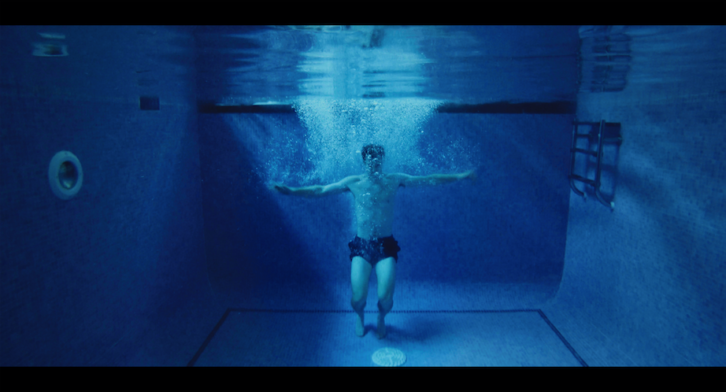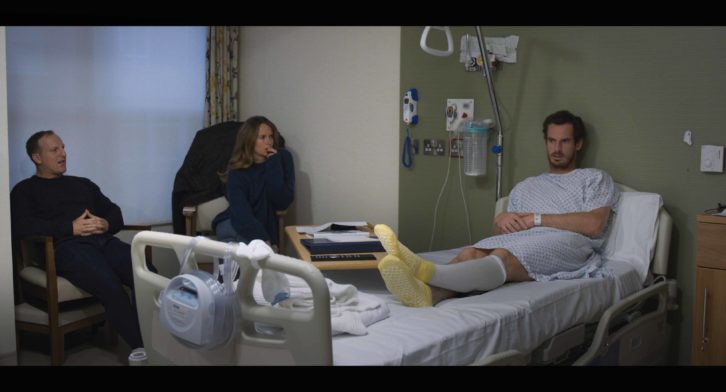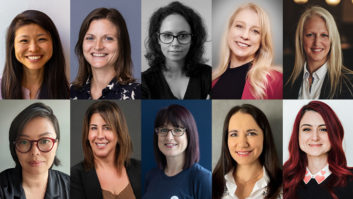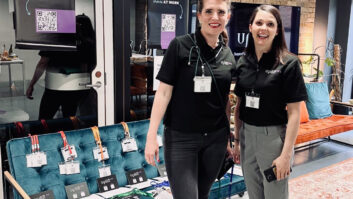British tennis star Andy Murray’s troubles with injury have been well documented in the press over the past two years. Now, Murray is offering fans a glimpse in to what’s happened off court in new documentary, Andy Murray: Resurfacing.
The film is released on 29th November by Amazon Prime Video in 200 countries and territories worldwide and is at times an emotional and raw account of the former world number one’s rehabilitation from an injury that almost called time on his playing career.
It follows Murray from January 2018 through the next 18 months as he battles with both the injury and what the future might hold. The film came about after Murray contacted director Olivia Cappuccini and asked her to document his recovery from surgery.
“The movie changed from what I was expecting at the beginning,” Murray tells TVBEurope. “I didn’t expect it to turn out how it did. I thought that I was going to have the first operation and then rehab for a few months and then I’d be back competing again. I thought it’d be interesting to film an athlete rehabbing from an injury that had been causing an issue for a while and seeing them return to playing.
“I hope everything I went through has made for a more interesting film for the audience. I hope people find it insightful and I hope they find it honest,” Murray adds. “I hope not just athletes but people who have gone through difficult times in their own lives can relate to it. Sometimes you think that you’re the only person that has issues when you’re going through it and I certainly was very selfish. I just thought that I was the only one that had these issues and it wasn’t other people going through it. I don’t want anyone else to have to have the operation, but it’s nice that I’m able to talk and discuss with other athletes the problems that they’ve had as well because it does help.”

The film gives viewers access to a side of Murray that they’ve not seen before. Away from the court he likes to make fun of his team, and is also a dedicated family man. “That all just happened naturally,” explains the film’s director Olivia Cappuccini. “I was never asked to leave a room ever by Andy and the family, which was amazing. We’re talking about a family and the inner corners of their own home. It was really important to show that dynamic as well, because they’re the backbone of Andy and his career and who he is.”
“Actually it’s an interesting point because what you’re really asking is ‘did Andy set out to portray a version of himself that we don’t know, so that we could all think oh, isn’t he a nice family man and isn’t he vulnerable?’” adds the film’s producer John Battsek. “There was nothing set out. He didn’t know what his journey was going to be, he didn’t know what was going to happen. He just wanted Olivia to be there and film it all, and what will be will be. In a way, I think that’s what’s so commendable of Andy because it’s brave of anyone but especially a top athlete to let a camera in to the level that he did and to have no restrictions of any sort, and not exercise any restrictions at any point. That gave Olivia the opportunity to make a really meaningful and authentic film, which I’m delighted to say I think she has.”
Both Murray and Cappuccini admit it took the tennis star a while to get used to the cameras, but slowly he became more comfortable. “The most important thing for me is that I built up a really good relationship with Olivia. I trusted her and I think that’s why as she was filming, I became more and more honest and open with her,” says Murray.
“At the beginning, when there’s cameras around and people you don’t know, you’re never going to completely open up, well I’m not anyway. I would always sort of open up to the people closest to me and be a little bit more guarded around people that I didn’t know. As the film goes on, we’ve obviously spent lots of time with each other and she’s seen me in lots of difficult situations having to make hard decisions, and we were communicating and talking almost every single day. That’s why she’s done a fantastic job because I’m able to talk to her like the camera’s not there, you sort of forget about it because you trust the other person. I think that makes for more interesting insight, everyone feels like they’re able to kind of be themselves and it’s a bit better for everyone.”
“When you are filming someone, you get to know them well, and when you see them going through what they are, you’re conflicted constantly,” adds Cappuccini. “We’re all drawn into emotional stories, so when I would see Andy breaking down, you know that the audience is going to be drawn in by that, but you’re completely conflicted and uncomfortable whilst filming it. That’s why the relationship I had with Andy was that I double checked with him that everything I was following was OK to use, and it was. Had it not been, he wouldn’t have let me. We didn’t know how it was going to end. And so that’s why we had to be there every single day.”
Obviously one of the key segments of the film is when Murray underwent his hip resurfacing operation in January 2019. Cappuccini was able to cover the whole operation in all its gory details. “Andy had no qualms about filming the scenes in the hospital. I was a bit reserved about it, but it was necessary,” she says.

“In terms of filming during the surgery, I had to scrub up and that was it. The filming set-up had to be very minimal. I just had a camera with a small microphone on the top and a tripod, and I had to keep myself to myself most of the time. I used a Red Raven camera, which is relatively compact, but still has the capability to shoot amazing things in such graphic detail as you see in the film.”
In fact, viewers will be able to “enjoy” every detail of the surgery as the whole film was shot in 4.5K. “It’s amazing that Amazon is releasing the film in 4K because I think the evolution of cameras with the streaming platforms means that you can watch it in all its glory,” says Cappuccini.
The film ends at a particular point in Murray’s comeback. Since filming finished he’s gone on to win his first singles title since the surgery, at the European Open in Antwerp in October. Was there ever any discussion about going back and filming more content? “No. Ultimately, the story took Andy to a point where he’s able to say ‘I feel good and who knows what lies ahead of me, but it all feels really positive and optimistic,’” explains Battsek.
“Given the journey of the film, that felt like the perfect place to end it, whether he goes on to win tournaments or doesn’t, he’s obviously going to go and play at the highest level again, and really, given the journey we’ve been on that felt to us like the perfect way to end the film. The fact that people can subsequently know that he went on and he’s already won another tournament, that’s just a sort of lovely fact of life that’s taking place post the end of the film.”







